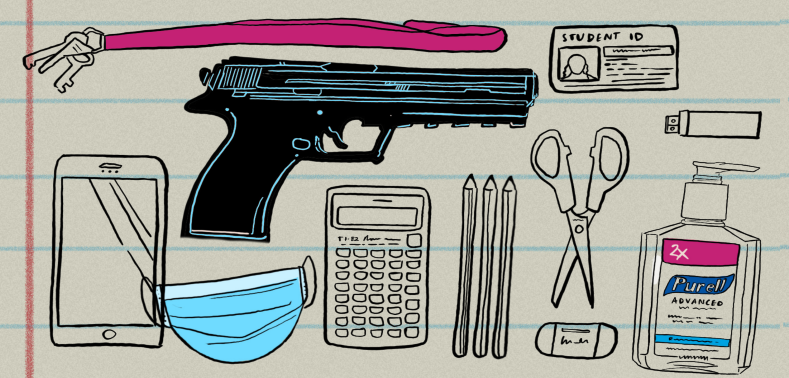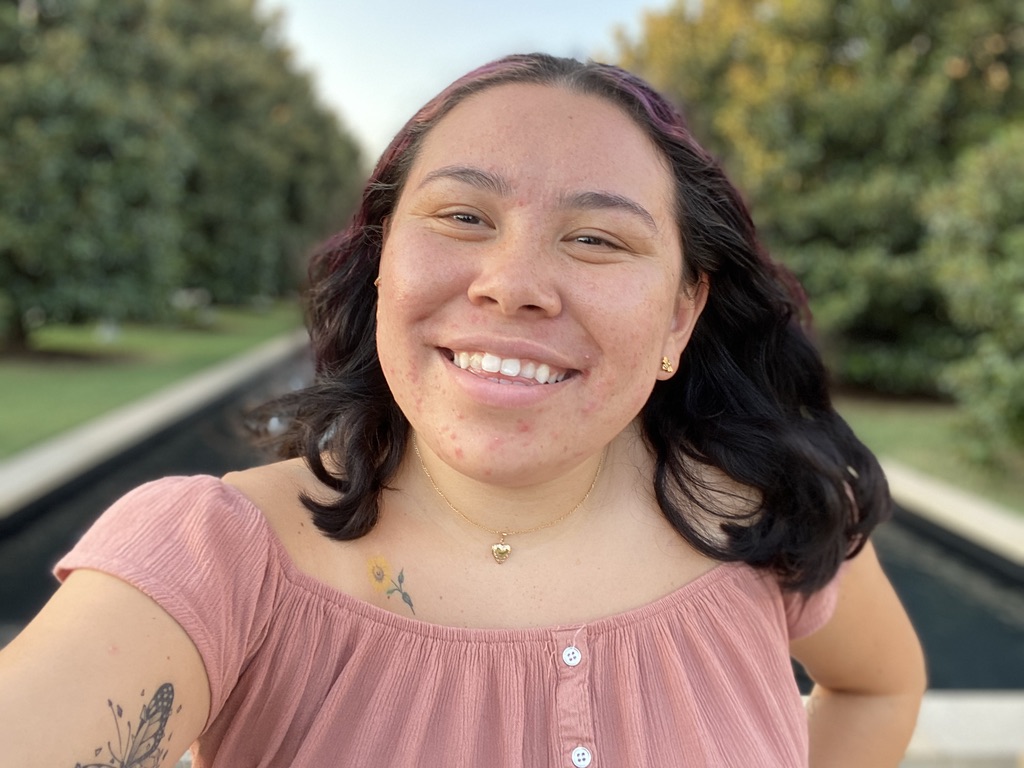
If Anything Happens I Love You is a 12-minute short film on Netflix that will shatter your heart, throw it out the window, run over it with a truck, and set it on fire. Directed by Michael Govier and Will McCormack and produced by Laura Dern, the film succeeds in making you experience all the stages of grief caused by school shootings without having a word of dialogue.
It is a beautiful 2D animated emotional rollercoaster that portrays the delicate subject matter of school shootings in America.
The story follows parents who have lost their little girl because of a school shooting, changing their lives forever.
The film opens with parents sitting at opposite ends of the table, where there is obvious tension between the two as they silently eat their dinner without making eye contact.
From there, the film reveals memories of the husband and wife with a little girl, presumably, their daughter.
It reveals memories of the little girl growing up, important moments in her life such as her 10th birthday, getting her first kiss, but also everyday things such as playing soccer with her dad and taking selfies with her parents. The memories paired with the music give off a melancholy mood as well as feelings of love infringed with pain.
It goes from the three of them enjoying a family vacation together to the parents sending the little girl off to school.
It seems like a normal day at school until you hear gunshots and screaming behind closed doors as you get a view of an empty hallway and an American flag hanging above the doors, its colors contrasting brightly against its gray background.
The little girl sends one last text to her mom.
If anything happens, I love you.
The film ends with the ghost of the little girl trying to fix her parents’ relationship by pulling them together. Somber music plays as her parents learn how to heal together instead of pushing each other away and ends with a feeling of hope amongst the feelings of sadness.
In an interview, the creators were asked why they wanted to make this short film, and their response was: “we really wanted to honor parents who lost kids to gun violence and create an elegy for these parents who have dealt with that grief that no one should have to go through.”
It addresses the issue of school shootings in America while acknowledging loved ones’ grief and pain.
The creators also called school shootings a “stain” on our country and emphasized that they happen all too frequently.
According to the Washington Post, 240,000 students have experienced gun violence at school since the Columbine massacre in 1999.
The year 2018 had the highest number of school shootings in America by far, with at least 94 school gun violence incidents, according to US Naval Postgraduate School. The data states “each and every instance a gun is brandished, is fired, or a bullet hits school property for any reason, regardless of the number of victims, time of day, or of the week.” Additionally, 55 people, including the shooters, were killed in school gun violence in the year 2018–the worst on record.
In contrast to this, If Anything Happens I Love You debuted in 2020, where school shootings have been lower than previous years with at least 67 incidents and 15 deaths. This is because, by March of last year, the majority of schools in America were virtual because of coronavirus mandated lockdowns. Even when we were all in lockdown, the number of school shootings only went down by 27 shootings from the years 2018-2019. It’s unbelievable that America had to experience a global pandemic to lessen the number of school shootings for a year.
Let’s explore two potential contributing factors that lead to school shootings: lack of mental health services, and lack of stricter gun control laws. Note: these are not the only things contributing to what causes school shootings, they’re just two topics that are talked about after a shooting.
Mental illness is a potential contributing factor to school shooting incidents. From an article published by The National Institute for Behavioral Health, “Having a psychiatric diagnosis is neither necessary nor sufficient as a risk factor for committing an act of mass violence.”
Mental illness comes up as a potential cause after a shooting because of the public’s generalized fear and the stigma that surrounds the important topic. It has not and is still not fully understood by everyone nor is it actually believed by everyone to be a real, important issue that needs to be acknowledged.
According to Sandy Hook Promise, the majority of individuals diagnosed with mental illness do not engage in violence with others, but it’s important to provide and sustain proper mental health treatment to not just people diagnosed with mental illness, but everyone.
Other probable causes include social alienation and social problems. Social alienation is a psychosocial phenomenon and includes disaffection and isolation. Shooters–some but not all–have expressed some form of alienation but again, that is not always the case. It has also been shown for shooters to have social problems. Social problems meaning deficiencies in the education system, poverty, discrimination, the lack of job
Opportunities and a lack of quality and comprehensive mental health care. All these things kids do not have control over.
A possible solution for this is to provide more money for neighborhoods and build more youth centers for kids and teens so they have a place to go anytime they want and feel less alone.
This could also lead to promoting more inclusive environments in schools to stop bullying and prevent the depression that can lead young people to hurt themselves or others.
Additionally, a more equal distribution of wealth and giving more money to schools that actually need it, instead of basing funding on the neighborhood’s wealthiness. Give more money to the schools where the teachers have to buy their own supplies, and kids do not have to cut out box tops in order to buy the supplies for their own schools.
More funding towards more support for mental health services would help too. Take some money away from law enforcement and put it towards helping prevent the crime in the first place.
It is also important to bring attention to gun violence in schools that are predominantly minorities and BIPOC. Specifically, black American youth face the worst violence.
Black American children and teens are disproportionately affected by gun violence and firearms have been the leading cause of death for the group for the past decade.
The Washington Post found that black American students make up 16.6% of the school population but they experience school shootings at twice that rate.
People are sometimes quick to blame minorities and BIPOC for the violence, but research by Political Research states, “Recent studies reveal that most school shooters are white males, with 97 percent being male and 79 percent White.” This shows how wrong and harmful stereotypes are pushed after a tragic event.
The second problem is a lack of stricter gun control laws. America as a whole has weak gun laws because the current federal corpus is riddled with loopholes and weak enforcement. This makes it very simple to get around even a basic background check which makes access to a gun a whole lot easier. Half of the Walmart stores in America still sell guns to anyone over the age of 21 even after they originally took them off the shelves in October 2020.
This snowballs into the US having a ton of guns. According to Vox.com, the US has far more than any other country in the world, with civilian-owned firearms ranking up to 120.5 guns per 100 residents, estimated in 2017. That means there are more firearms than people.
Texas, specifically, also has weak gun laws. According to Everytown.org, “the state does not require a person to pass a criminal background check before purchasing a firearm from an unlicensed seller.” Additionally, Texas even allows some staff and teachers to carry firearms in K-12 schools as well as allowing people with licenses to carry concealed firearms on college and university campuses.
There is insufficient research on the root causes of the problem of school shootings in America because each shooting varies and develops from different situations. While there is an increase in the demand to identify potential perpetrators and develop more preventative measures, there have been very few policies that have actually been addressed and passed to decrease the problem and that is something that needs to change.
This short film shares an important message about school shootings in America and how they’re a real problem that should have been fixed a long time ago. But like most problems in America, they’ve been ignored.
This short film also illustrates a grieving process the parents are going through, and shows how resilient humans are and how much the human spirit can endure. It’s a testament to all the people who have lost loved ones and honors them. It is a prayer hoping for things to change.
School shootings should not happen. Parents should not send their kids off to school with the fear they will never see them again. Kids should not have to fear for their lives, worrying that their classmate or someone else is going to come on campus and shoot them.
Teachers, parents, and kids should not have to protest, march and fight for basic safety regulations that are standard around the globe. Marching shows their passion and that is to be admired, but lawmakers need to pay attention, listen to them, and change the laws.
It’s been said before but it needs to be said again and again until things change, stricter gun laws need to be enacted, and there needs to be easier access to sustained mental health support. Fear has no place in school.
When kids go back to school eventually, the masks will help stop the virus, but what will stop the bullets?

Comments